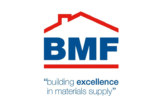
Essentially referring to the profits earned by NMBS members on turnover throughput via the buying society, understanding the benefits of rebates, how to maximise the rebates received and when to expect them can be challenging. Julie Langford, NMBS Finance and Operations Director, delves into the detail.
Rebates are pure profit on top of the negotiated price, so they are a significant member benefit. When merchants become a member, they get access to rebates on products that they buy through NMBS.
Members earned an average of 3.79% on turnover transacted via NMBS in 2022, with a total of £85.3m paid out to members. This makes rebates a lucrative feature of NMBS membership worth getting to grips with.
Standard rebates
NMBS gives its members rebate payments at the earliest opportunity possible throughout the year, so members are not waiting to benefit from their purchases. Members will also often receive rebate payments from multiple suppliers at the same time, alongside a breakdown of earnings across each. These rebate payments happen monthly, quarterly, twice yearly and annually, depending on the type.
The timing of standard rebate payments depends on the specific negotiation between NMBS and each supplier. But all members will receive rebate payments from a specific supplier at the same time.
“Members earned an average of 3.79% on turnover transacted via NMBS in 2022, with a total of £85.3m paid out to members.”
Rebates are normally fixed percentages directly linked to an individual merchant’s turnover with each supplier. Although most agreements offer the same percentage of rebate, some adopt a tiered rebate scheme where the more turnover a merchant puts through a supplier, the higher rebate percentage.
However, all agreements are transparent and all NMBS members have an equal opportunity to earn the same percentages of rebate.
Other rebate methods
NMBS Exhibition rebates are available if the merchant visits the annual show, scans with a certain supplier, and places an order with that same supplier. The merchant will benefit from this exclusive rebate for orders placed with the supplier across the rest of the month.
Some suppliers will give further OnePlace rebates when products are bought through the ordering and PIM platform. OnePlace is a platform designed to make ordering, managing, maintaining, and distributing accurate product data easier for suppliers and manufacturers in the building materials sector.
Residual rebate is paid once NMBS’ annual accounts are agreed and filed. It represents the balance left after calculating all guaranteed rebates, taking out operating costs and transfers to reserves. This rebate is not guaranteed and is calculated on a case-by-case basis, determined by the suppliers a member has transacted with in the previous calendar year.
NMBS rewards members who pay in advance. Members can get Admin rebate by paying their account early and meeting certain conditions. Merchants are required to pay by the 15th of the month rather than at the end of the month, meaning a February invoice would need to be paid by 15th March, for example.
Benefits of rebates
Rebates are such a prized NMBS member benefit as they are pure profit on top of the negotiated price of goods — and the rebate deals members get cannot be accessed by doing deals with the suppliers directly. The more merchants buy through NMBS, the more they will get back in rebates whilst in addition, supplier companies like Makita, for example, provide the best deal on the marketplace through NMBS.
Common misunderstandings
One of the most common misunderstandings is that rebates are paid immediately. Yet the frequency of the rebate payment is part of the supplier agreement, and determines when the member will receive their rebate from NMBS.
Rebates from Q1 are paid at the end of Q2 and rebates from January will be paid at the end of February. However, all members have access to a rebate schedule which explains when they can expect payment of each type of rebate available from NMBS.
Many people do not consider the cost of becoming a member alongside the rebate returns. An independent builders’ merchant meeting the minimum turnover requirement of £150,000 per year for NMBS membership would receive around £2,800 in rebate payments. This means members can expect to receive more than double the current £1,300 joining fee in rebates, as a minimum.
These financial benefits would not be available to merchants outside NMBS, so making the most of membership benefits is just one of a whole host of ways to improve business finances by being part of the organisation.

Opportunities for growth ahead alongside cash flow issues and the impact of inflation were up for discussion at the latest NMBS Lightside Committee roundtable.
Committee member merchants reported a flat market so far in 2023. Low to mid-end products, like screws, have experienced decreased sales but to combat these issues merchants were focusing on upselling to customers.
Lightside merchants had long predicted that inflation would impact their businesses. For many around the table, opinion was that the UK economy has been in an unrealistic state for the last ten years owing to very low interest rates, and current rises were part of an uncomfortable process of getting rates back to around four or five percent. Accordingly, many reported being in a process of adapting to increased costs and finding ways to improve their profit margins again.
Similarly, inflation and increasing costs mean trade customers are having cash flow issues which the merchants must contend with. For instance, merchants with sites in more financially impacted areas are seeing much bigger issues with credit risk, customers not paying on time and a reduction in sales.
Maintaining consistent stock levels was deemed vital, as were effective personal relationships with customers. Indeed, the group reflected that when times are good, engagement with customers could be lower however they are placing a renewed focus on developing relationships with trade customers, who have the power to bring customers into the showrooms and boost cash flow.









